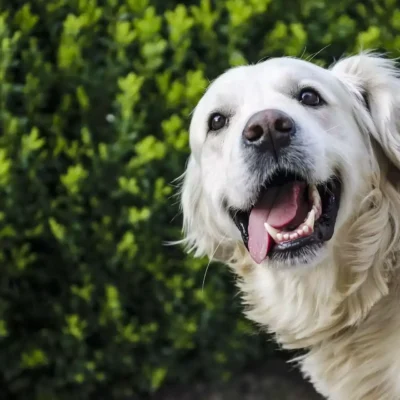Pet Dental Health Month, observed in February, draws attention to a crucial but often underestimated aspect of pet welfare. Dental problems can cause significant discomfort for pets, sometimes exceeding that experienced by humans. Regrettably, pets cannot communicate their dental troubles or schedule dental appointments independently. Therefore, pet owners must remain vigilant and recognize any potential signs of dental issues. This article features expert insights from a Chesapeake, VA local veterinarian, providing guidance on detecting and addressing dental problems in pets.
Dental challenges are prevalent among our furry companions, and even the most devoted pet owners may overlook significant signs. Common problems encompass gum disease, abscesses, overcrowding, and misalignments. Dogs, especially avid stick-fetchers like Fido, frequently suffer from cracked or broken teeth. Similarly, cats contend with tooth resorption and feline stomatitis. Identifying these concerns is fundamental for proactive and responsible pet care.
Keep up with routine vet visits to monitor your pet’s teeth. Remain watchful for warning signs between appointments.
- Tartar Formation
Apparent tartar buildup is intricately linked, or paw in hand, with gum disease, sharing parallels with human dental issues. It begins with minor gum irritation, known as gingivitis, which can be reversed with conscientious care. Unfortunately, this reversal often escapes pets. As the condition advances, tartar accumulates around the gumline, forming pockets of infection that result in the sequential loss of gum tissue and then bone.
It’s crucial to acknowledge that this is more than a cosmetic matter; gum disease carries real dangers. Beyond causing tooth shifting and loss, it’s linked to serious health conditions like heart disease and problems with the liver and kidneys. The infection can migrate from pets’ mouths to vital organs through the bloodstream.
If your pet has noticeable brown or yellow buildup on their teeth, they may require a deep cleaning to eliminate tartar, enabling gum healing and reattachment. Ask your vet for further details.
- Terrible Smelling Breath
While pets aren’t famous for minty-fresh breath, their loving nose boops and smooches shouldn’t leave you recoiling. Perpetual bad breath is concerning, possibly indicating multiple health issues.
- Bleeding Gums
Bleeding gums in pets, reminiscent of humans, are a clear indicator of gum disease. Although you may not notice direct changes on your pet’s gums, other signs may become apparent. Watch for toy or dish smudges and dark fur stains near their mouth. These subtle indicators may signify underlying dental issues needing evaluation and treatment.
- Ropy and Excessive Drooling
Certain dog breeds have a natural tendency to drool more than others. Owners of Bloodhounds, Boxers, Great Danes, Saint Bernards, Mastiffs, Retrievers, or Basset Hounds are accustomed to this trait in their pets. However, if your typically non-drooling pet begins exhibiting excessive or stringy drool, it could be a sign of an underlying issue that needs attention.
- Cats rarely drool, so if you detect Fluffy dribbling, stay alert.
- Dropping Food
Though pets may not always eat with grace, they usually excel at getting food into their mouths. However, if your furry friend is contending with dental issues, chewing may become painful or challenging. You might observe them unintentionally dribbling food from the side of their mouth.
- Opting for Tender Food/Treats
Experiencing tooth pain while chewing is uncomfortable. Hard food only worsens the discomfort. You may notice Fido or Fluffy preferring softer options and ignoring their dry food. Your pet may also lose interest in hard snacks.
- Lackluster Participation in Playtime
Fido’s playful antics often involve his mouth, so dental issues might interfere with his enjoyment of games like Fetch or Tug O War. Similarly, Fluffy might lose interest in batting at a catnip mouse or chasing after the elusive red dot if dental problems affect her inclination to play. Dental health significantly impacts pets’ enjoyment of their favorite activities.
- Swelling
Observable swelling acts as an essential warning. It signals significant discomfort for your pet and indicates the possibility of a severe infection. While all infections carry risks, those near the brain are especially concerning due to their proximity to vital organs. Immediate veterinary attention is necessary to address such critical health concerns.
- Withdrawal from Physical Touch
Watch closely if your pet begins shying away from head or face contact suddenly. This is especially alarming if your pet usually enjoys forehead rubs or ear scratches. Any abrupt aversion to these interactions may indicate discomfort or pain, prompting urgent veterinary evaluation.
- Surly Attitude
Have you ever had a toothache? It probably didn’t improve your mood. Pain is universally unpleasant. If your furry friend suddenly behaves differently, retreating to a quiet spot and avoiding family interaction, it could indicate discomfort. In severe cases, pets may even growl or snap if their face or mouth is touched. Recognizing these signs promptly allows for addressing potential dental issues and ensuring your pet’s well-being.
- Mouth Pawing or Rubbing
This behavior is often noticed in cats. You may observe your feline friend pawing at her mouth or face. Although it may be a common grooming behavior for Fluffy, if it appears unusual or prolonged, it could indicate an underlying issue that warrants evaluation by a veterinarian.
- Raggedy Appearance of Fur (Cats)
Kitties are usually adept at self-grooming, and Fluffy may allocate hours daily to maintain her soft, clean fur. If your feline companion experiences mouth pain, it could disrupt this routine. Unwell cats often deviate from their typical beauty habits, mirroring the human tendency to feel unlike themselves when sick. Recognizing shifts in your cat’s grooming behavior is crucial to promptly monitor and address potential health issues.
- Differences in Eating Habits
One more notable aspect to be particularly attentive to would be any modifications or shifts in your furry friend’s eating habits or behaviors. As previously stated, while a preference for softer food may be notable, it’s crucial to be alert for supplementary indicators. Your beloved pet may also demonstrate changes such as prolonged meal times or fluctuations in their appetite.
- Appetite Downturn
When pets experience severe dental pain, they may lose all interest in food, putting them at risk of weight loss and potential malnutrition, serious health concerns. Reduced appetite can indicate various underlying health issues. Therefore, it’s crucial to promptly seek veterinary care if your pet exhibits signs of not eating. Timely intervention ensures proper management of their dental health and overall well-being, preventing further complications and promoting a speedy recovery.
- Sneezing
Dental problems commonly give rise to issues in nasal passages or sinuses, leading to abnormal nasal discharge, an aberration for pets like Fido or Fluffy. Recognizing these indications is pivotal for timely veterinary intervention.
- Additional Signals of Dental Challenges
While the most common warning signs are listed separately, some are easily visible to the naked eye, including:
- Extra Teeth
- Missing Teeth
- Visible Abscesses
- Inflammation
Don’t delay; contact your Chesapeake, VA veterinary clinic if you spot any of these signs.
Signs of Dental Concerns in Pocket Pets
Our smallest companions, like gerbils, hamsters, Guinea pigs, and bunnies, face unique dental challenges with continuously growing, open-rooted teeth. Ensuring they have appropriate chew toys is paramount in preventing dental issues. Beyond the mentioned signs, vigilance is needed for additional indicators such as a dirty bottom, teeth grinding, pain vocalizations, diarrhea, and visibly overgrown teeth. These small animals demand special attention to maintain optimal dental health, emphasizing the importance of attentive care and suitable preventive measures.
Maintaining proper dental health in pets is crucial due to the prevalence of dental issues often overlooked by pet owners. Warning signs such as tartar buildup, drooling, weight loss, bad breath, changes in eating habits, and visible swelling should not be ignored. These indicators signify potential dental problems that, if left untreated, can lead to severe complications. Seeking prompt veterinary care upon noticing any of these signs is imperative to prevent further deterioration of dental health and associated systemic health issues. Therefore, regular dental check-ups and immediate action upon observing warning signs are essential for ensuring the overall well-being and longevity of pets.
If you’ve noticed any of these symptoms in your pet, please feel free to contact us, Western Branch Veterinary Hospital in Chesapeake, VA anytime. We’re here to support you!









